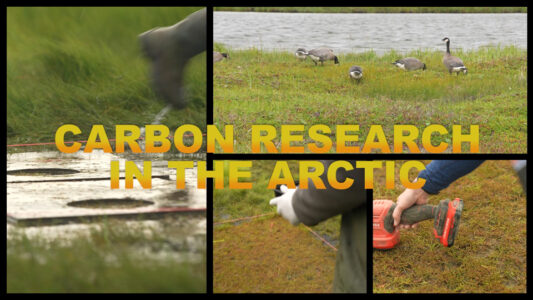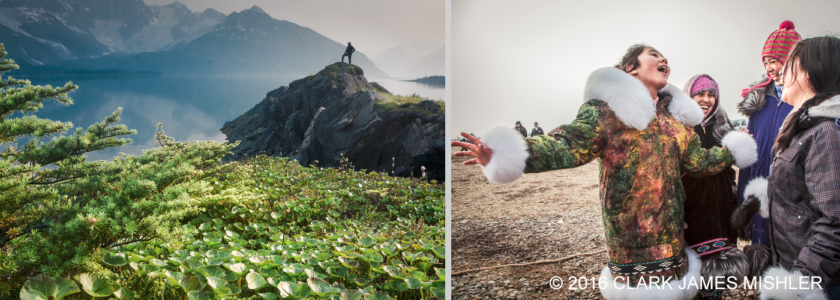
About 95% of the food people in Alaska purchase is imported. “That’s a problem,” photographer Clark James Mishler told Frontier Scientists. One of his dreams is to “Help build a sustainable food system for Alaska.”
Subsistence activities are one puzzle piece of a sustainable food system. Subsistence harvests in Alaska contribute to food security and to rural economies. The Alaska Department of Fish and Game reports Alaska state laws define subsistence as the “noncommercial customary and traditional uses” of fish and wildlife. Subsistence activities create food, clothing, shelter, tools and goods including handicrafts, transportation, and culture. Department records show households which produce the most subsistence foods in communities “Share with elderly relatives, the less fortunate, and young adults,” reducing hardship and increasing food security, especially in rural communities with less availability of stable income jobs and less reliable access to imported goods.
Beyond Anchorage
Regional differences can come into focus through the lens of a camera. Clark James Mishler explained “Alaska for me as a photographer has been just fascinating. Because truly Anchorage is a very modern city with skyscrapers and big banks and oil companies and theaters and live music… All the reasons that you want to live in a city are here in Anchorage,” Mishler said. “Anybody who lives here, I think loves it here. But just an hour from here there are villages where there is no running water, there are no bathrooms, there are limited supplies in the store… The newest car in the village might be 10 years old and it may or may not run.” Mishler described the differences between Anchorage living and rural Alaska living as stark: “It’s like living in a third world country, but it’s right here in America, and it’s an hour from here.”
Mishler hopes infrastructure that can help safeguard quality of life will reach more rural Alaska areas. “Lack of progress, lack of investment, to get the water systems into those areas, to get the electricity produced at a level that people can afford it– these are the things that have always amazed me.”

Kwethluk
A rural village in Alaska, the village of Kwethluk, proved Mishler’s “Go-to place for a lot of projects which visually displayed many of the different aspects of living in rural Alaska.” There, he photographed subsistence lifestyle using frequent visits over the course of six years to document “All the things that they do in Spring and Summer or Fall and Winter to survive in a village.”
In Kwethluk, Mishler joined locals Peter and Vera. “When I first met them they had a one-room house with a single light bulb in the middle of the ceiling and a linoleum floor that was fairly worn out. And I slept under the kitchen table among the chairs, that was the only space left.” Over time Mishler watched the family grow. “They had more kids and the house expanded to three rooms. And the heating got better in the house: they got a little propane heater. They had more lights in the house, so it was a brighter place. They got a television in the house. I saw all these things change as time went on.”
Mishler was privileged to document subsistence living with Peter and Vera’s extended family in Kwethluk. He “Went out on many trips with Peter, and Vera, and Vera’s mother, and Peter’s mother, and all the aunts and uncles and cousins. And all the different explorations around the area of Kwethluk. Whether it be hunting for caribou, hunting for moose, gathering blueberries, catching fish on the frozen rivers. All these activities proved to be a wealth of experience and a better understanding of how people on subsistence live,” Mishler said.

The perfect food
“Some fish is dried to be eaten in the next couple of months, some fish is dried to be eaten in 6 months.” Mishler described salmon strips: “Those products are stripes, often dried to the point when they are a lot like leather. But they are very nutritious.”
Mishler was one of three people living on dried salmon strips during a moose hunt. “We’d wake up in the morning and go ‘I’m hungry’ and have a salmon strip. It’s not a lot of food but you felt completely full and you felt that you had just taken care of your hunger. And then about 11 o’clock you’d go ‘I’m kind of hungry again, I think I’ll have a salmon strip.’ So basically we did this for 5 days. And the amazing part was: I never once had any hunger pangs,” Mishler said. “This one little strip would take care of all your hunger for the next few hours. And I never got sick of it. It was the perfect food.”
“These are strips of substance that people have been eating for thousands of years. And the process: to catch the fish, to process the fish to last for 6 months so that you could eat them in the late spring when you are hungry and to be able to subsist on those strips… I think that kind of learning that from Yup’ik Natives was pretty darn interesting and pretty fun.”
“And of course, I was there to make photographs and those photographs kind of speak for themselves.”
Explore a selection of Clark James Mishler’s photography on his website at www.mishlerphotos.com.
Laura Nielsen 2016
(Food security subsistence Alaska Native culture anthropology)mishler
Frontier Scientists: presenting scientific discovery in the Arctic and beyond














